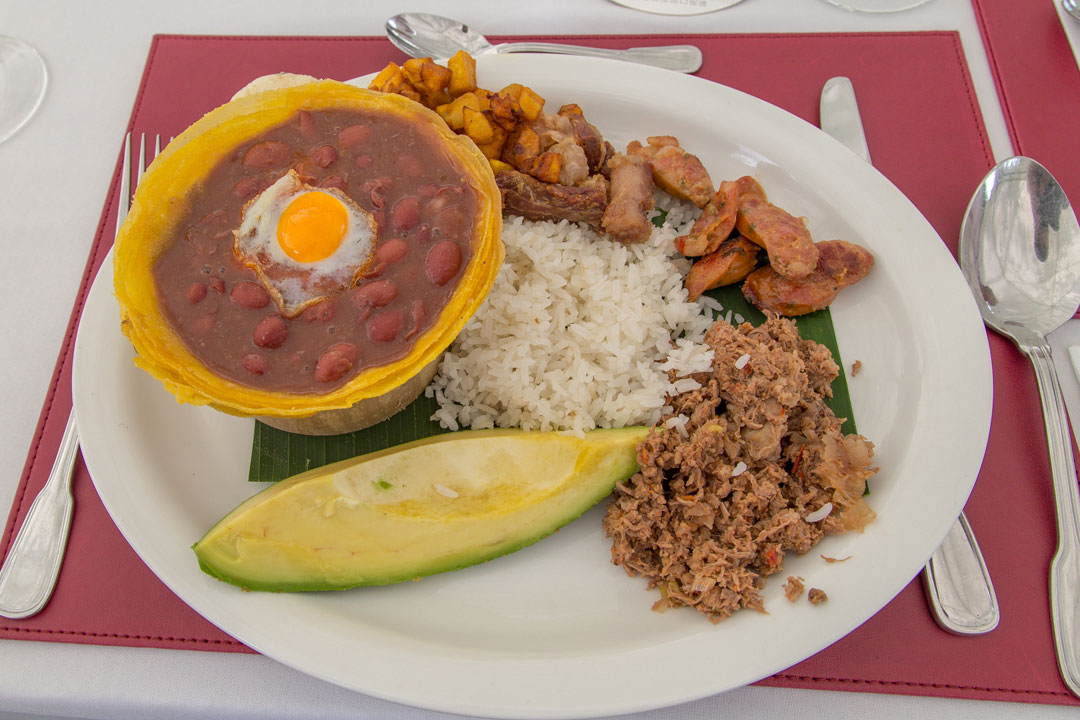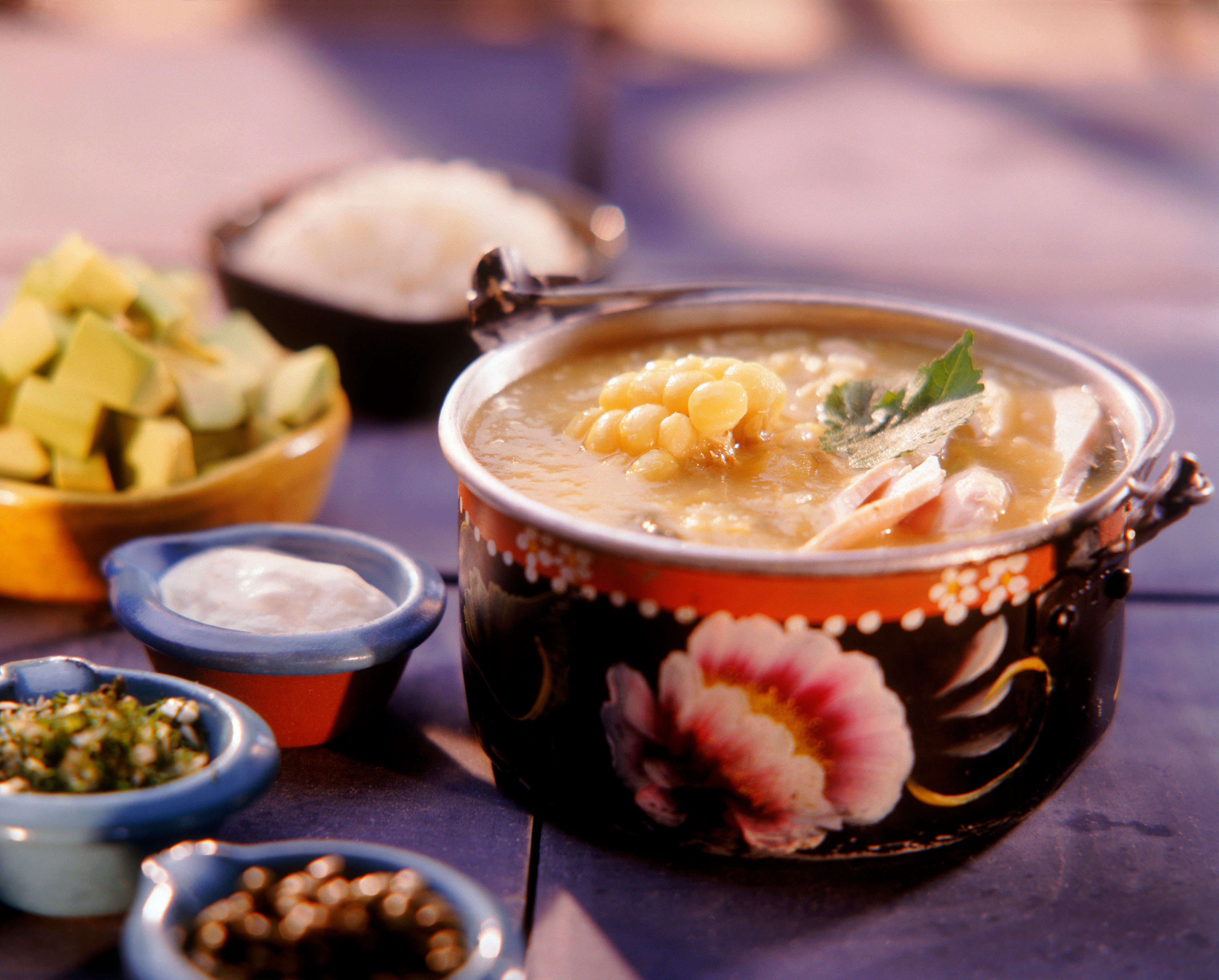Colombia is a diverse country with a wealth of cultures, histories and wildlife that will surprise visitors every day of their trip. The best way to peek beneath the surface and discover Colombia’s secrets is to sample its food and taste the many dishes that make Colombian cuisine unique. Here we suggest five dishes with a twist.
Bandeja Paisa
Few dishes are as traditionally Colombian as the bandeja paisa, or ‘paisa platter’ named after the local nickname, paisas, for the people who live in and around Colombia’s world-famous coffee district. It’s a platter-and-a-half, a dish designed to nourish the bellies of the workers who harvest its precious coffee beans up and down the region’s notoriously steep hills. Bandeja paisa are both delicious and hearty and you’re likely to encounter the following on your plate: minced meat, chorizo, fried pork, fried egg, black pudding, red kidney beans cooked with pork, a corn arepa, plantain, rice, hogao sauce and a slice of avocado. Leave room to wash it down with a local fruit juice.

Street snacks at the coast
The people of the Colombian coast cook some of the most inventive snacks and finger foods around and many of them are fried, resulting in the enticing sound and smell of snacks sizzling on street stalls up and down its shores. Most famous is the arepa e huevo, where an egg is poured into a corn cake, fried, and served piping hot but the cassava fritters, carimañolas, stuffed with cheese or minced meat and found on every corner are pretty tasty too. Colombian sausages, butifarras, are a popular choice and white hominy rolls, bollo limpios, are a staple. If you do indulge, don’t forget dessert. Vendors tout giant baskets full of caramelized coconut, guava sweets, sweet popcorn balls and more.
Ajiaco
Sit down to Sunday lunch with a family in Bogotá or any of the savannas surrounding the Colombian capital and you’re likely to be served a huge bowl of the region’s much-loved chicken soup, known as ajiaco. The word ‘soup’ doesn’t do it justice. It’s a thick and juicy broth usually served in an earthenware pot made with three different kinds of potato, capers and corn-on-the-cob and drenched in cream with a chunk of avocado and a tower of rice on the side. This is comfort food at its best. Don’t be afraid to dunk your avocado in your soup along with most of your rice. Most Colombians love to mix up their ajiaco and taste all its ingredients at once.

Sancocho valluno
Staying with the soup theme and nothing says special occasion like a sancocho from Colombia’s Cauca Valley and, like many traditional dishes, every family has its own particular way to cook and serve this dish. But some ingredients in this vast melting pot of a soup are essential and you will see plantains, cassava and potatoes thrown into the mix. After that it’s each family to their own with most adding a chunky corn-on-the-cob and cilantro with rice and avocado on the side. One of the best ways to eat sancocho is as a picnic dish cooked over an open fire, usually on a beach or beside a river. The smoky flavor is unforgettable.
Tamales
Breakfast of champions, the tamal is an astonishing morning meal in more ways than one. The first is how filling this generous corn, in Santander; rice in Tolima and pumpkin in Cundinamarca and Boyaca, mash steamed in a banana leaf can be, mixed up with egg, chicken or pork, carrots and onions and whatever else takes the chef’s fancy. The second is how long a banana leaf can keep this breakfast warm, making a tamal the ideal choice if you’re heading out for a hike, picnic or trip down a Colombian river. Its banana wrapping, sometimes a corn husk, makes for a handy plate too. Pair it with a steaming mug of Colombian hot chocolate, brought with you in a flask.
What are you waiting for? Sample traditional Colombian food and learn something new about the country’s diverse cultures and customs with every bite.


















